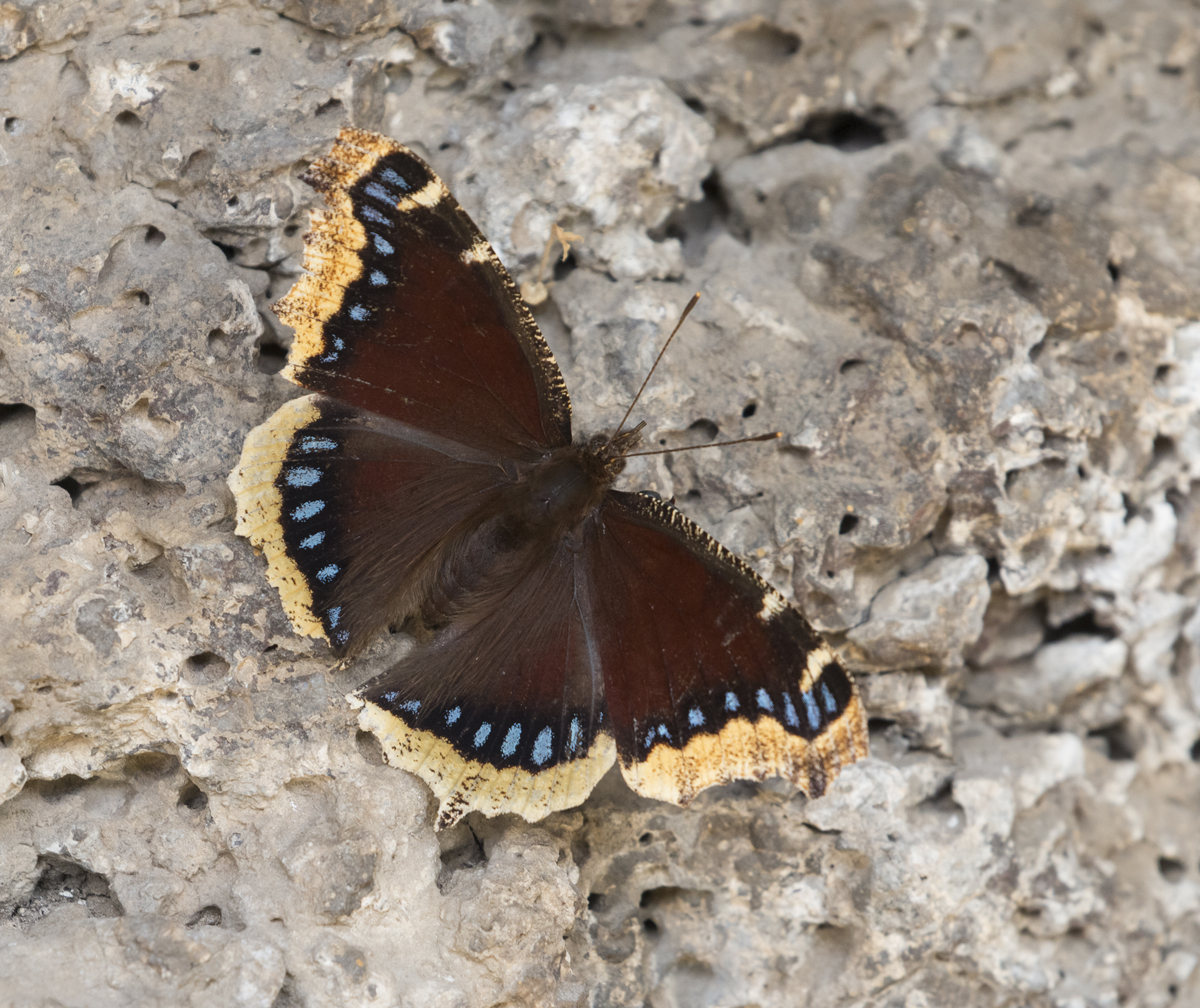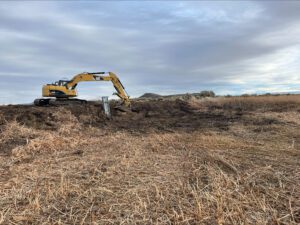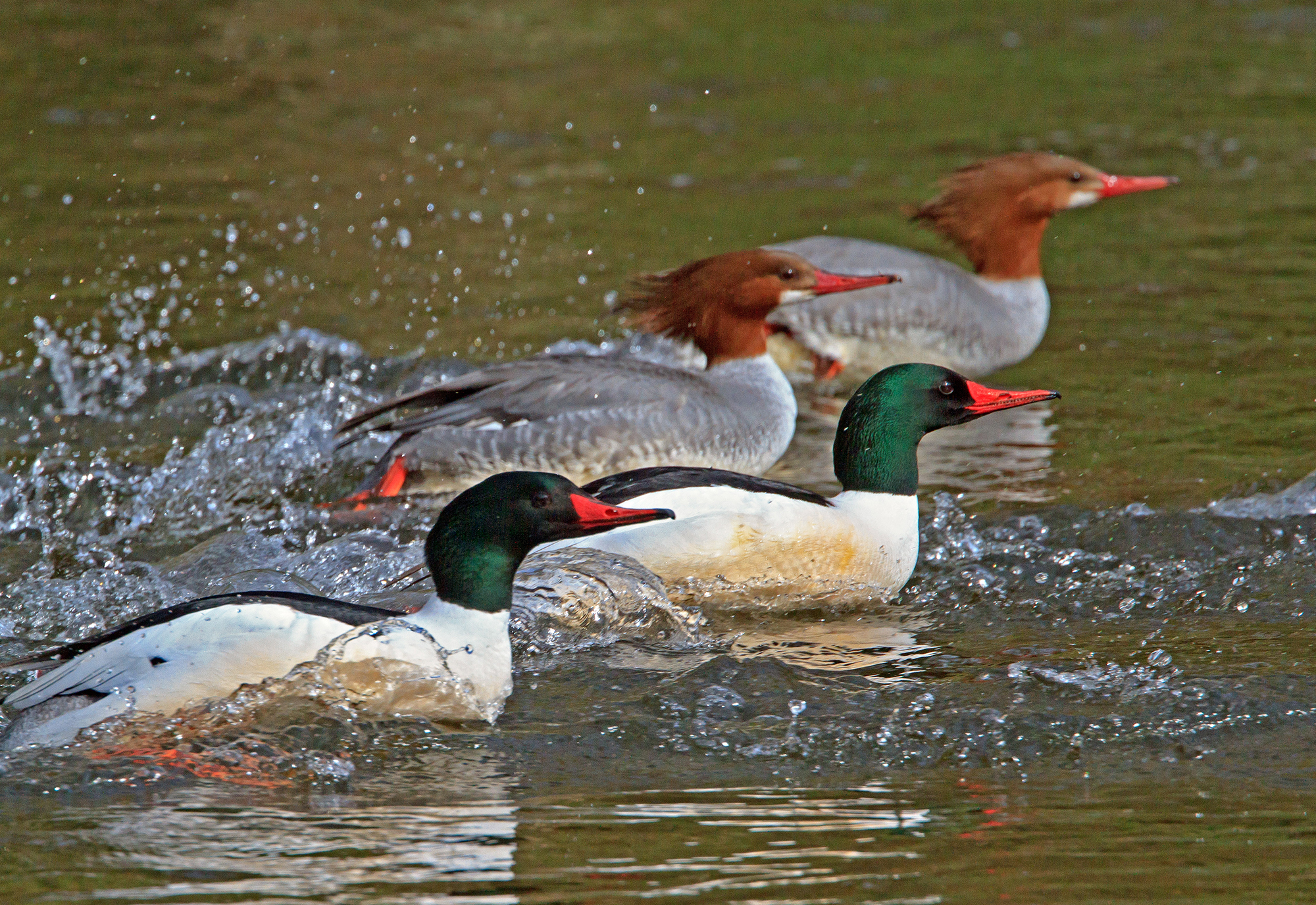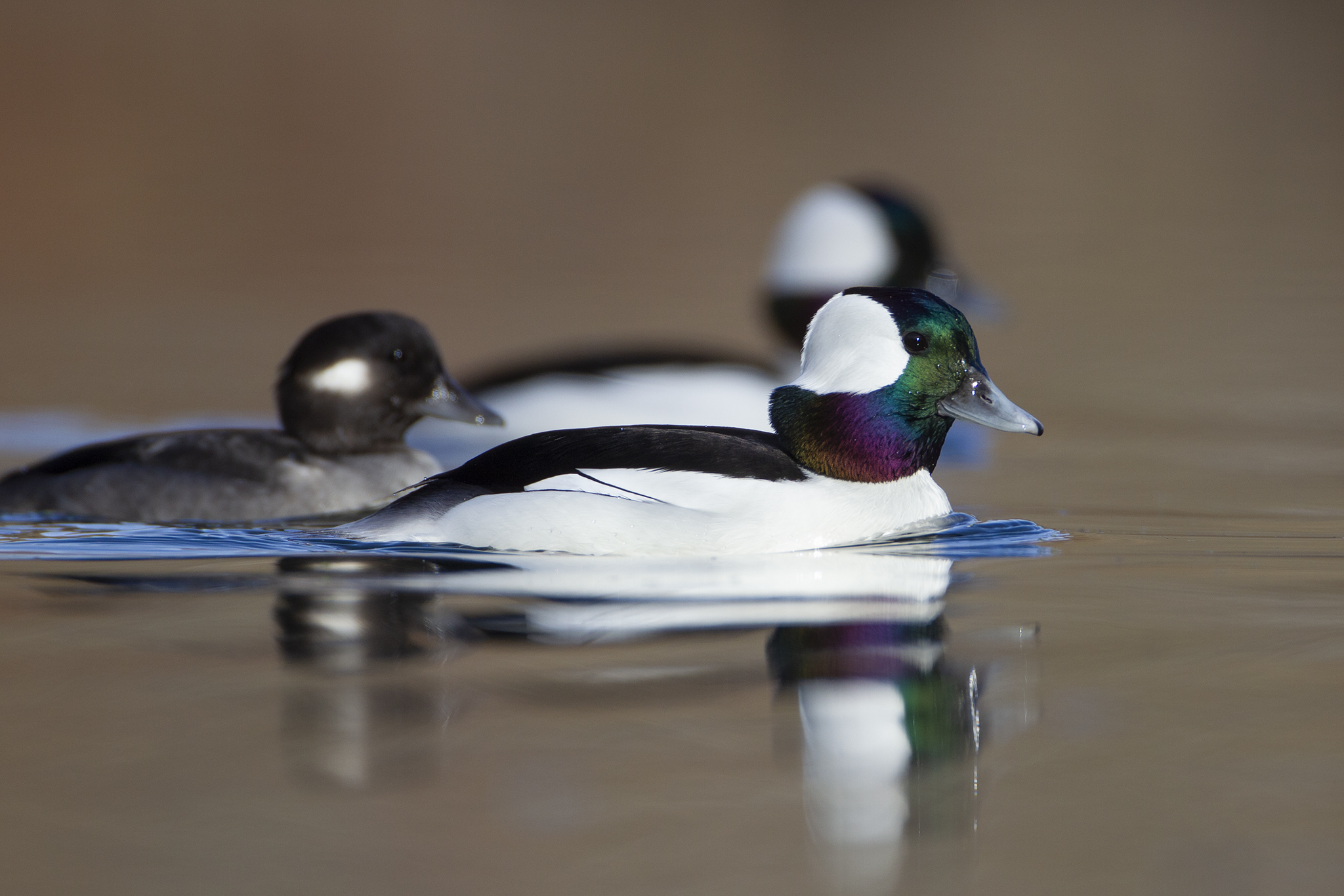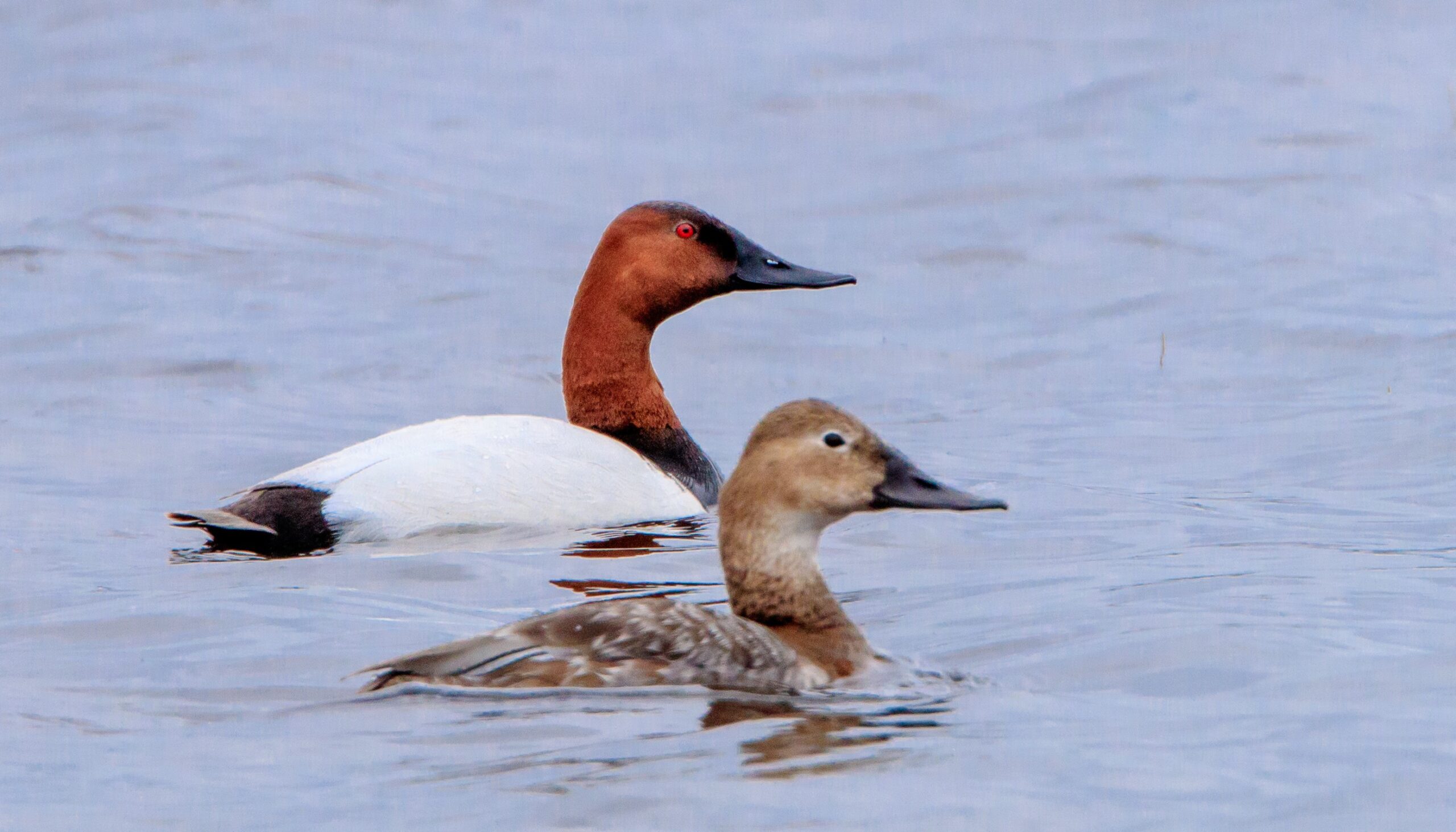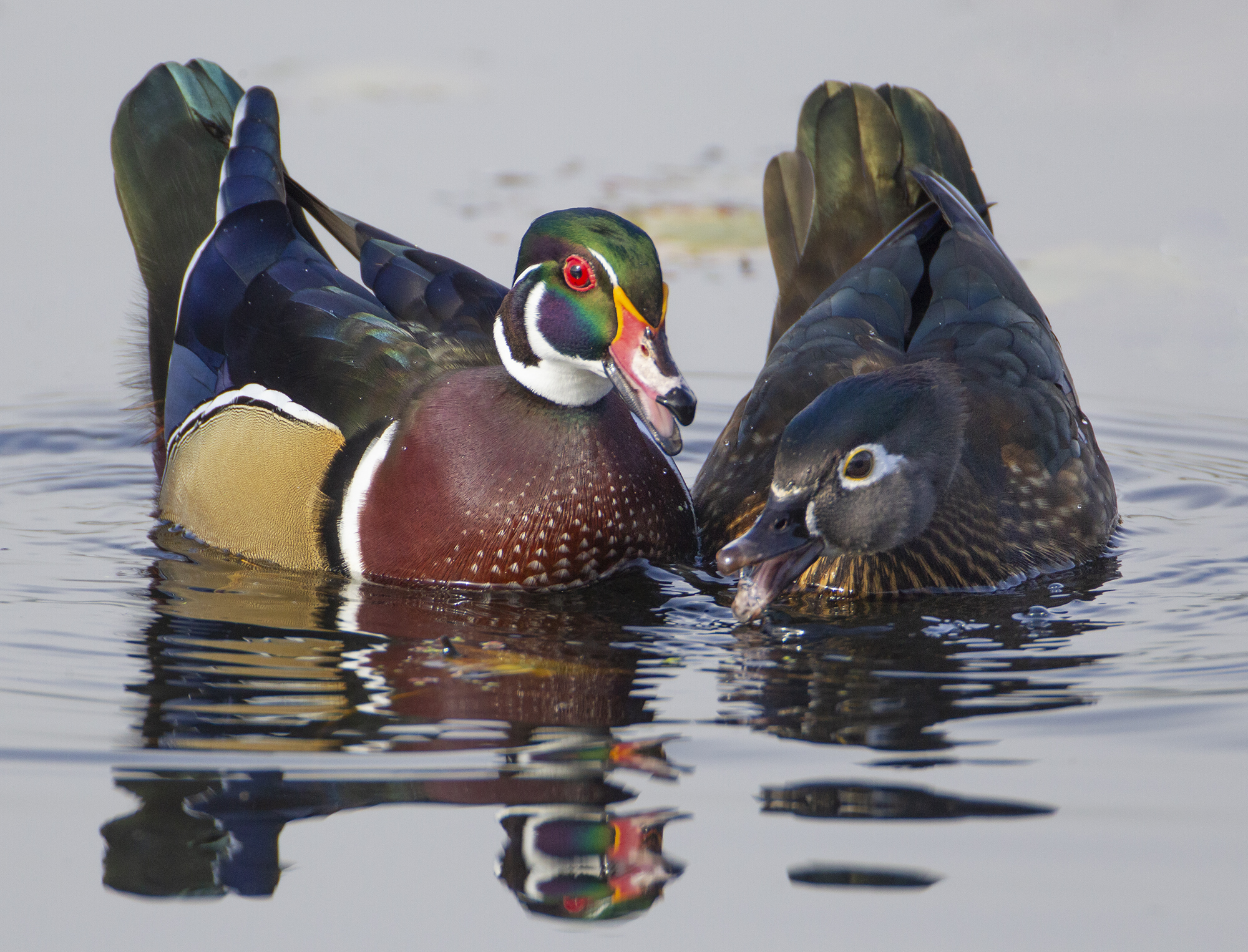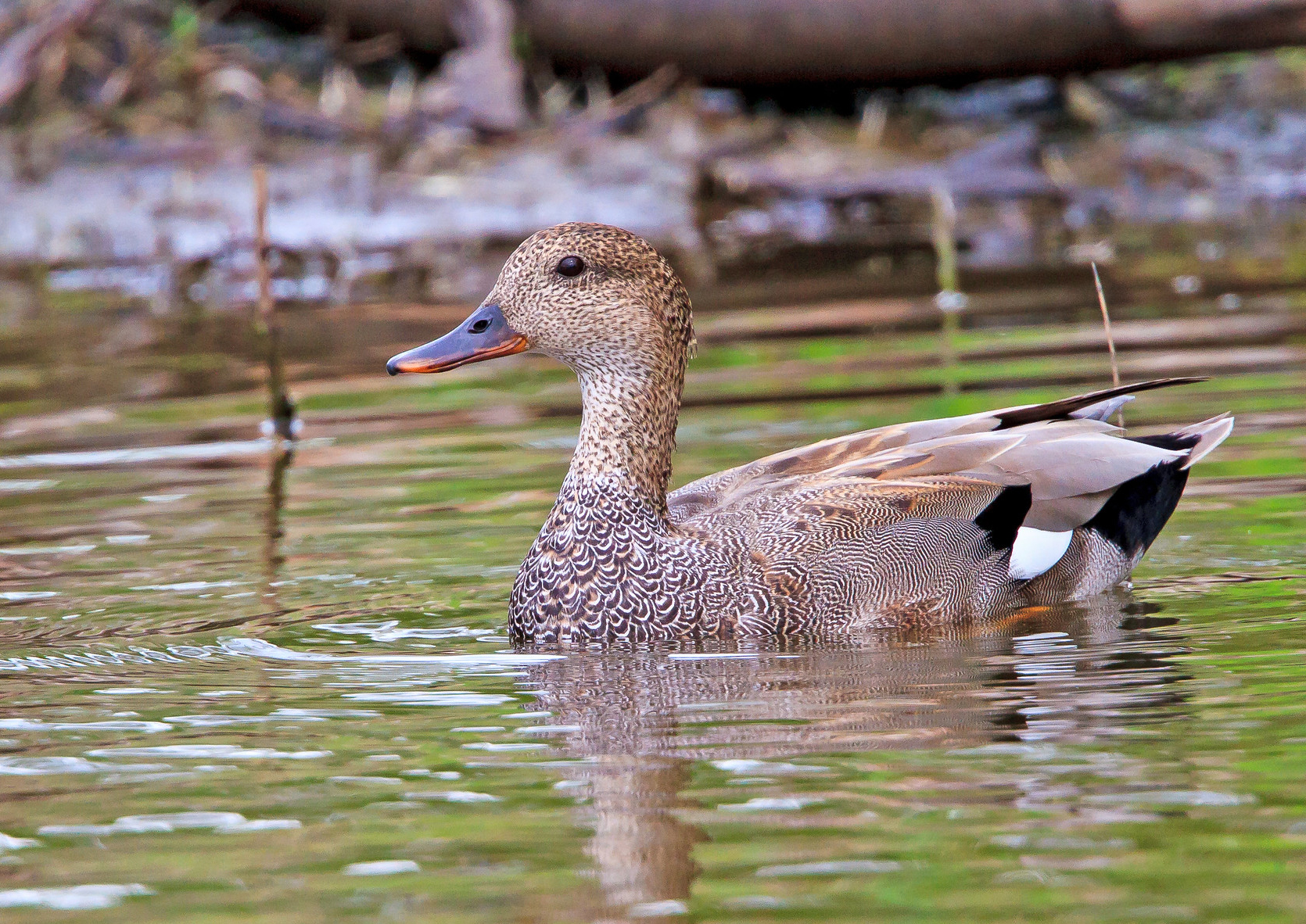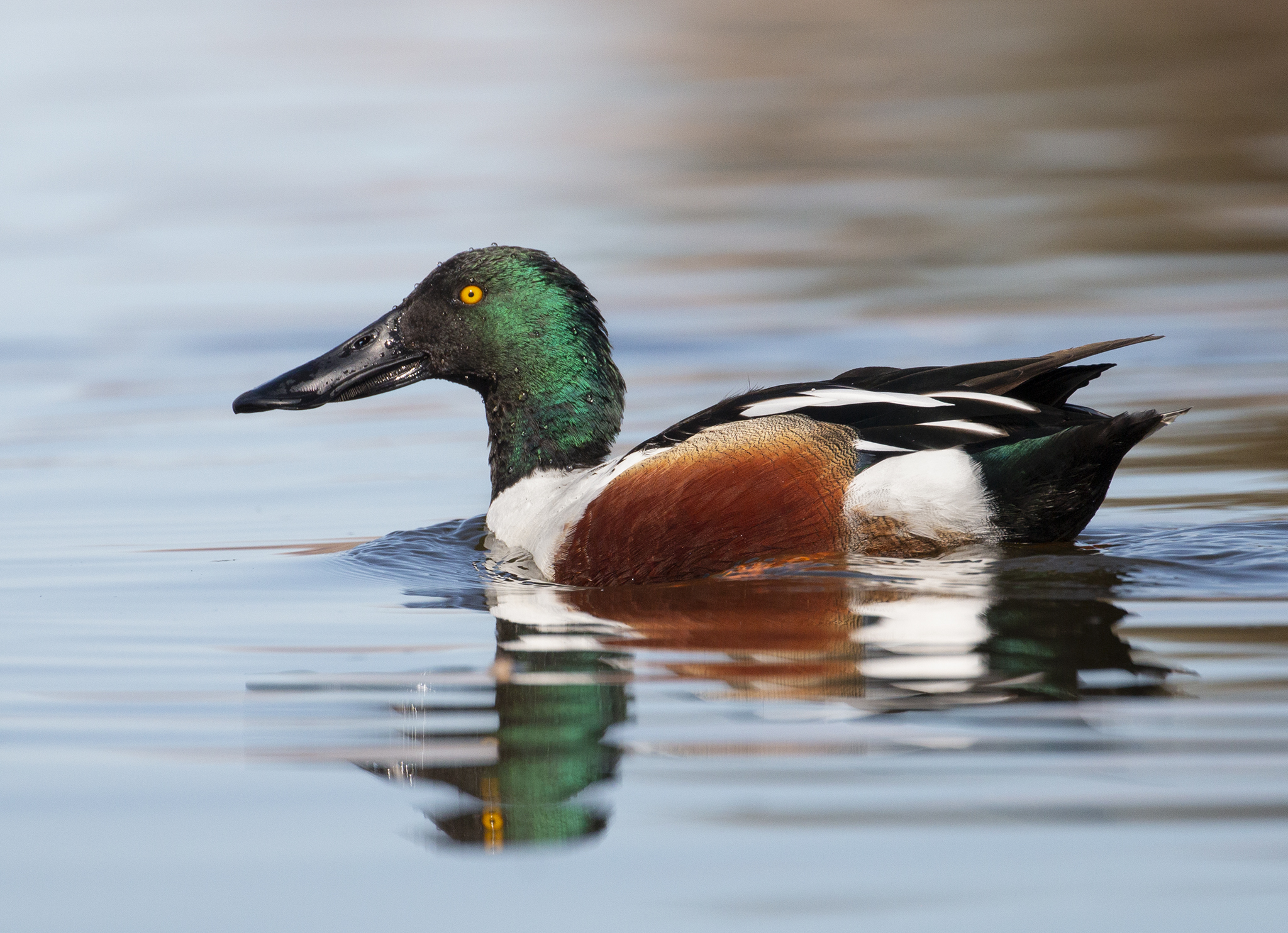Written by Peter Pearsall/Photo by Peter Pearsall
Spring is slow to arrive to Malheur Refuge. Frost clings to the ground well into April most years; the austere high-desert vegetation stubbornly refuses to show signs of life until even later. But the subtle lengthening of days doesn’t go wholly unheralded. Resident birds begin warming up their vocal repertoires, migratory ducks and geese arrive to still-frozen waterways, and hibernating squirrels and other mammals rouse from their dens, all anticipating the change in seasons.
With below-freezing temperatures occurring regularly at night, one doesn’t expect to see many poikilothermic, or “cold-blooded”, creatures out and about. But one resident poikilotherm that stirs to life on warmer days in early spring is, improbably, a butterfly: the mourning cloak (Nymphalis antiopa), a widespread species found across North America and Eurasia, is usually the first butterfly seen at Malheur Refuge each spring.
Seeing a butterfly on the wing when the landscape is still icy and winter-browned can be startling. Across their range, chocolate-brown mourning cloaks are often the first butterflies to emerge each year, fluttering across snow-drifted fields and through leafless forests at a time when very few invertebrates are active. Unlike most temperate insect species that overwinter as larvae or pupae and emerge as adults in spring, mourning cloaks emerge in summer and spend the bulk of their 10-month lives as adults during the coldest period of the year. So how do these delicate insects survive below-freezing temperatures at night? And what are they eating during the day, when flowers are but a distant memory of seasons past?
To address the first question, mourning cloaks engage in “cryo-preservation”—that is, they allow themselves to literally freeze solid. Like other freeze-tolerant organisms such as certain frogs, turtles and insects, mourning cloaks will concentrate the sugar alcohol glycerol in their hemolymph (analogous to blood in vertebrates) to serve as an antifreeze. The glycerol helps to slow down and isolate the formation of ice crystals in the butterfly’s hemolymph-filled body, preventing lethal damage to organs and tissue. This adaptation allows the butterfly to spend the colder months of winter nestled in leaf litter or tree cavities, as frozen as its surroundings and hidden from predators. With the arrival of longer days and warming sunlight, the butterfly thaws out each morning to begin its search for food and mates.
This brings up the second question: What do mourning cloaks eat when the ground is still frozen? While the majority of butterflies require flower nectar of some sort for food, mourning cloaks are adept at sipping tree sap, which also thaws during sunny winter days and provides a crucial source of sugar in a nectar-barren landscape. Trees damaged by winter weather can often be found oozing sap as the weather warms. In Harney County, juniper trees sporting “wells” drilled by red-naped sapsuckers are another reliable source of sap. Mourning cloaks may also find fermented fruit left over from the previous summer.
Finding fully fledged butterflies at winter’s end might seem like an anomaly to us homeotherms, but in the case of mourning cloaks, it’s simply an aspect of their unique life history.

